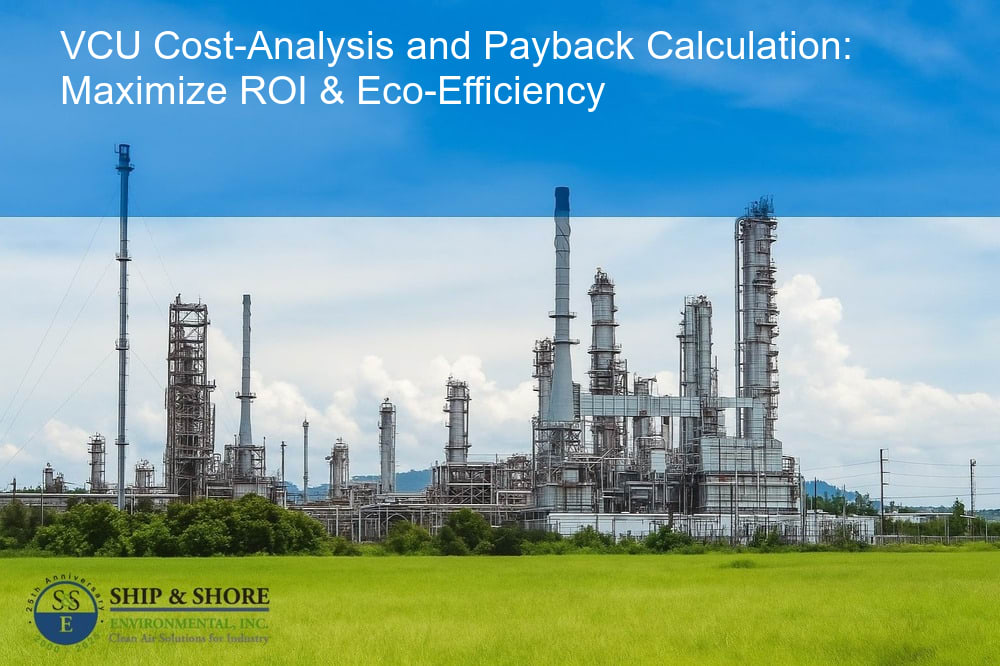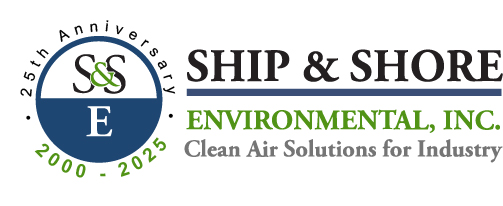
Navigating VCU Cost-Analysis and Payback Calculation Essentials
November 19, 2025 6:17 amUnderstanding the Importance of VCU in Industrial Processes
In the realm of industrial operations, the significance of Vapor Combustion Units (VCUs) cannot be overstated. These systems play a pivotal role in managing and mitigating the impact of Volatile Organic Compounds (VOCs), pollutants known for their adverse effects on both human health and the environment. Conducting a thorough VCU cost-analysis and payback calculation is essential for businesses striving for efficiency, regulatory compliance, and sustainability. By effectively breaking down the costs associated with VCUs, companies can make informed decisions that not only align with environmental standards but also bolster financial performance.
Cost Implications of Volatile Organic Compounds (VOCs) Management
Managing VOC emissions is a significant concern that incurs various costs, extending beyond mere compliance with environmental regulations. Poorly managed VOCs can lead to substantial financial penalties, health impacts, and damage to corporate reputation. A VCU serves as a critical solution for controlling these emissions, ensuring that businesses operate within legal limits while promoting a cleaner environment. However, installation, operation, and upkeep of VCUs present their own cost considerations. Understanding these financial implications is vital for evaluating the overall return on investment and long-term benefits associated with implementing a VCU system.
Why a VCU Cost-Analysis and Payback Calculation is Essential
Embarking on a VCU cost-analysis and payback calculation is not just a financial exercise; it’s a strategic imperative. This analysis allows us to pinpoint the total cost of ownership for a VCU, encompassing factors such as initial capital expenditure, operational costs, and maintenance outlays. By clearly identifying these components, we can establish a comprehensive view of the VCU’s financial impact and how quickly the investment will pay for itself. This enables businesses to make data-driven decisions that balance immediate costs with potential savings and environmental benefits in the long term.
The Complexities of VCU Cost-Analysis and Payback Calculation
Conducting an effective VCU cost-analysis and payback calculation can be challenging. The process demands a thorough understanding of both financial metrics and environmental regulations. Consequently, our expertise in this field ensures accurate calculations, providing a comprehensive view of the investment and its long-term benefits. Additionally, taking a nuanced approach allows us to identify potential pitfalls and opportunities that may affect both the immediate and long-term payback periods.
Breaking Down the Costs: Installation, Operation, and Maintenance
One of the most critical components in a VCU cost-analysis and payback calculation is the breakdown of costs. This process involves categorizing expenses into three major areas:
- Installation Costs: These include initial engineering, procurement, and construction expenses. Installation costs can vary significantly depending on the complexity of the project and geographic location.
- Operation Costs: These include expenses related to running the unit, such as energy consumption, utilities, and workforce requirements. Understanding these costs is crucial for an accurate VCU cost-analysis and payback calculation.
- Maintenance Costs: Regular upkeep and potential repairs are essential for maintaining the efficiency and longevity of the VCU. These costs can often be underestimated, leading to unrealistic payback expectations.
Analyzing these cost categories allows for a more precise estimation of the total financial commitment involved. Furthermore, it highlights areas where cost savings can be achieved, such as through energy-efficient technologies or optimized maintenance schedules.
Realizing Financial and Environmental Returns From VCU
The ultimate goal of a VCU cost-analysis and payback calculation is to determine the financial and environmental returns on investment. Financially, a well-implemented VCU can offer significant savings on VOC management and regulatory compliance costs. In the long term, these savings can offset the initial investment, making the VCU a financially viable solution. Environmentally, the reduction in VOC emissions leads to improved air quality and compliance with stringent environmental regulations. This dual benefit ensures that industries not only meet legal requirements but also contribute to global sustainability efforts.
Moreover, accurate calculations enable businesses to evaluate additional benefits such as tax incentives, grants, and other financial aids which can further enhance the payback period. For example, government programs aimed at reducing emissions often provide substantial financial support, thus improving the overall return on investment.
In essence, the complexities involved in VCU cost-analysis and payback calculation are surmountable with the right expertise and approach. By breaking down costs and recognizing both financial and environmental returns, we can provide a comprehensive and accurate forecast, ensuring that our clients make well-informed decisions. As a result, they can achieve both cost-efficiency and environmental compliance through the implementation of a VCU.
Did you know? Proper cost-analysis and payback calculations for a VOC Control Unit (VCU) can result in significant financial savings and environmental benefits for industrial processes over time.
Future Projections: Why Acting Now Saves More in the Long Run
Industrial operations are at a pivotal moment where both cost-efficiency and environmental compliance are paramount. Implementing a vapor combustion unit (VCU) not only serves these dual objectives but does so efficiently when action is taken promptly. Our comprehensive VCU cost-analysis and payback calculation reveal that the longer industries delay, the more they risk accumulating avoidable expenses. Immediate implementation ensures reduced emissions and operational costs, making it a smart long-term investment that safeguards our financial and environmental future.
The Role of Expertise in Reliable VCU Cost-Analysis and Payback Calculation
Navigating the intricacies of VCU cost-analysis and payback calculation requires specialized knowledge and experience. At Ship & Shore Environmental, Inc., our team brings an unparalleled level of expertise to guide you through every phase – from initial assessment to post-installation maintenance. We leverage cutting-edge technology and industry best practices to offer a transparent, accurate financial outlook. By entrusting your VCU installation and analysis to us, you gain more than just a service; you gain a partner committed to your operational excellence and environmental stewardship.
Achieving Cost-Efficiency and Environmental Compliance with a VCU
Adopting a VCU not only helps in meeting regulatory mandates but also restores balance to your financial planning by mitigating the risks commonly associated with VOC emissions. Our VCU solutions are designed for high efficiency, seamlessly integrating into your operational workflow while delivering measurable returns. Through careful VCU cost-analysis and payback calculation, we ensure that your investment yields both immediate and long-term benefits, streamlining your path toward a more sustainable and profitable future.
FAQ
Why is it important to invest in a VCU for industrial processes?
Investing in a VCU is vital for industrial processes because it addresses both the demand for cost-efficiency and the necessity for environmental compliance. Not only do VCUs reduce damaging emissions of volatile organic compounds (VOCs), but they also transition your operation towards a more financially sustainable model by diminishing the costs associated with VOC management. Consequently, incorporating a VCU can lead to a significant reduction in potential regulatory fines and health-related liabilities.
What are the main cost factors to consider when installing a VCU?
When planning to install a VCU, several cost factors should be evaluated to ensure a thorough understanding of the financial commitment required. These include the initial installation expense, the ongoing costs of operation, and the maintenance outlay needed to keep the system functioning optimally. Additionally, our experts can assist you in examining potential energy recovery options, which can further enhance the cost-efficiency of the VCU system.
How does an early VCU investment contribute to long-term savings?
An earlier investment in VCU technology can significantly enhance long-term savings by preventing escalated operating costs and compliance-related expenditures. Furthermore, by acting swiftly, you can benefit from advanced VCU solutions that optimize energy usage, reduce emission-related penalties, and diminish the likelihood of costly operational interruptions. Our financial analysis shows that a proactive approach tends to yield considerable savings over time.
Can a VCU installation lead to both financial returns and environmental benefits?
Absolutely. A well-executed VCU installation not only promises a favorable financial return through efficient operations and energy reuse but also delivers commendable environmental benefits. By curbing the release of harmful VOCs, VCUs play an essential role in protecting air quality and contributing to overall environmental health. Our commitment extends to ensuring that your VCU solution aligns with these dual objectives, providing you a sustainable competitive edge.
What makes Ship & Shore Environmental, Inc. a trusted partner for VCU cost-analysis and implementation?
Our trusted expertise in VCU technology stems from years of dedication to this specialized field. We provide a robust combination of innovative design, engineering acumen, and practical experience that informs our comprehensive cost and payback assessments. Collaborating with Ship & Shore Environmental, Inc. means partnering with a team that is deeply committed to maximizing your operational effectiveness while upholding environmental integrity. Hence, we are your ally in navigating the complexities of adopting VCU systems with confidence and precision.
Categorised in: Blog

